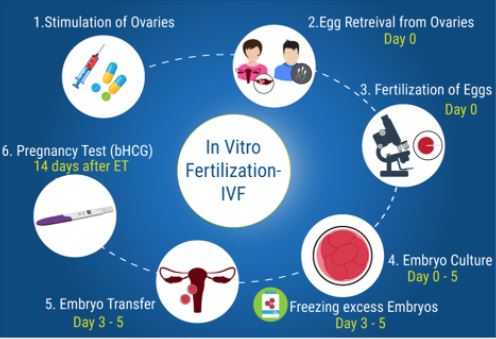Are you trying to conceive through IVF and are losing it to repeated miscarriages? Speak to Dr. Hrishikesh Pai, an IVF specialist in Mumbai
Medical advances have given us the tools to conceive and carry a pregnancy to term successfully. However, these advances have also left us with challenges as a society. One such challenge is infertility. A major cause of infertility is sub-fertility. The in-vitro fertilization (IVF) process is not 100% successful, and, in some cases, the IVF process does not yield any pregnancy. Therefore, it is necessary to look at improving your IVF success rates to yield higher pregnancy rates.
With the increasing number of IVF procedures performed in India, there has been an escalation in the number of people who have tried to optimize their IVF success rates. Increasing success rates can be achieved by adopting a focused and organized program. This article highlights several ways to improve your IVF success rate in Mumbai.
IVF success rates are boosted by laboratory treatments that increase the odds of bringing a baby home, says Dr. Hrishikesh Pai, a renowned IVF specialist who has set up the best IVF center in Mumbai.
Male and Female infertility issues are addressed by the leading gynecologist in Mumbai, Dr. Hrishikesh Pai. Once these issues are addressed, he will very systematically plan the entire process of IVF implantation timed to perfection for achieving 100% success of embryo implant.
IVF helps women with PCOD, blocked fallopian tubes, and other conditions that make it difficult for them to conceive.
Contents
Optimize your IVF procedure:
The first step to improving your IVF success rates is optimizing your IVF procedure. Optimizing your procedure aims to identify and address the factors that contribute to low odds of success.
Some factors that might be involved in low IVF success rates include:
– Health status
– Pregnancy history
– Infertility diagnosis type
– Age of parents
– Number of embryos transferred
– Embryo quality
– Sperm quality
Techniques in the lab that improve IVF success:
Over many years of using the technology of IVF, the doctors observed that even if the procedure of IVF is a success, very few make it to childbirth. The women were facing the challenge of miscarriage.
So, more techniques evolved thanks to the brilliant minds that ensured that the implant resulted in childbirth.
The doctors and IVF specialists have tried to cover all the aspects involved that result in a successful pregnancy and successful childbirth, all in a petri dish!!
Assisted Hatching:
During natural conception, an embryo can latch on to the uteral lining only after it can break through a gel-like coating surrounding it. If the embryo doesn’t hatch through this coating, it will result in miscarriage.
The embryologists do this task in a petri dish, and then the embryo is implanted in the uterus.
Intracytoplasmic Sperm Injection:
ICSI is a procedure that involves injecting sperm into the cytoplasm.
When the sperm cannot break through the female egg and penetrate the cytoplasm, the attempt to get pregnant fails.
The embryologists can achieve this stage in the lab where sperm is chosen and injected into the egg using a syringe.
This technique is helpful in the following scenarios:
Low sperm count
Fewer eggs
Or if the frozen sperms do not thaw well.
PGIT for finding the most viable embryos:
Preimplantation genetic testing PGT-A is done to determine if the 23 pairs of chromosomes are all present and have tested normal, as against any history of family illnesses. An embryo cell consists of 23 male and 23 female chromosomes paired together. This forms our DNA and gives us our family traits, unfortunately, illnesses included.
It allows the patient to just transfer ONE embryo, lowering the risk of twins due to multiple embryo implants to ensure pregnancy. This procedure will enable you to cryopreserve the remaining viable embryos for future use.
Blastocyst Culture:
One way to improve your success rate is by maximizing the number of embryos available in IVF. Blastocyst culture offers a way to help with this. By using blastocyst culture, you can increase your chances of getting pregnant by increasing the number of healthy and viable embryos.
One way to perform blastocyst culture is by putting the fertilized egg into a petri dish or some other culture medium on day 2 after fertilization. The embryos reach the blastocyst stage by day5 or day 6. Not all embryos make it to this stage. Only the healthiest embryos make it to this stage. These multiple embryos can be frozen until they are needed for IVF or other procedures. At that time, you will only need to thaw out one embryo at a time instead of all the embryos being thawed out at once and not having enough time to grow before implanting them into your uterus.
Summary:
We have seen in this article how the sheer marvel of the human brain and the technology come together to bless your family with a child when you have successfully challenged God’s mechanism and failed to conceive naturally.
Ask your fertility specialist, Dr. Hrishikesh Pai, The best in IVF technology, for additional information on in vitro fertilization.



